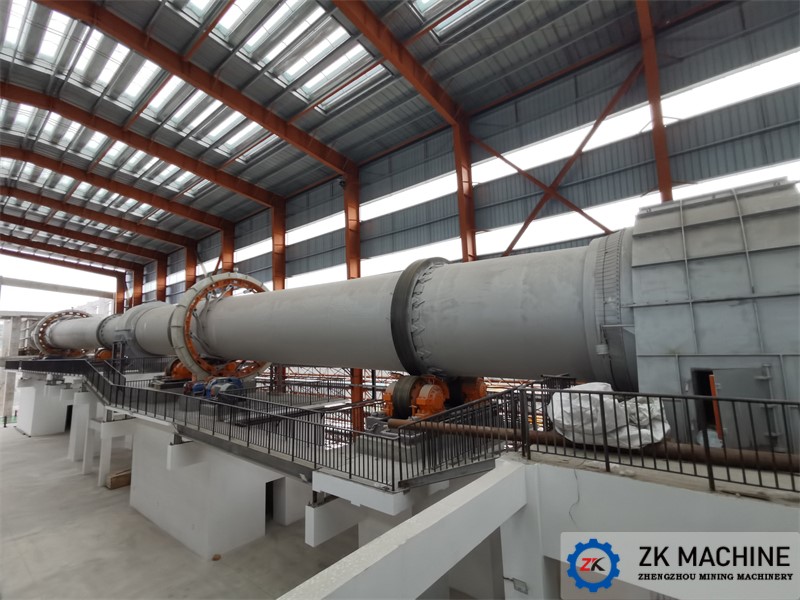- +8618937185591
- +8618937185591
- ec19@zkcorp.com
- +8618937185591


In China's major coal-producing areas, mountains of piled-up coal gangue, once a heavy burden on the ecological environment, have now, through scientific and technological innovation, transformed into high-performance aggregates used in construction, road building, and other fields. This transformation not only solves the problem of solid waste treatment but also opens up a green circular economy path of "resources - products - recycled resources."
I. Coal Gangue High-Strength Aggregates: Why Are They a Disruptive Breakthrough?
Traditional building aggregates rely on the mining of natural sand and gravel, which not only consumes resources but also causes problems such as soil erosion. The emergence of coal gangue aggregates directly addresses two major pain points:
Environmental Value: For every 10,000 tons of coal gangue utilized, 3 mu of land occupation can be reduced, 5,000 tons of CO₂ emissions can be cut, and pollution of soil by sulfides and heavy metals can be avoided.
Performance Advantages: After modification, the compressive strength of coal gangue aggregates exceeds 30MPa, and the water absorption rate is as low as 5%. Some indicators even outperform natural stone, meeting the requirements of high-strength concrete above C50.
Case in Point: A company in Anhui Province used local coal gangue to produce ceramsite aggregates, which have been successfully applied in high-speed railway bridge projects. As a result, the durability of concrete has increased by 20%, and the comprehensive cost has decreased by 15%.
II. From "Waste Residue" to "Fine Product": Unveiling the Core Technologies
The transformation of coal gangue into high-strength aggregates requires a precise "genetic modification":
Precise "Inspection": Composition Analysis and Pretreatment
Intelligent Sorting: Magnetic separation removes iron, calcination decarbonizes, and chemical leaching extracts heavy metals, ensuring that the raw materials are "pure."
High-Temperature Calcination: Under a controlled atmosphere at 900°C, coal gangue is transformed into active minerals, laying the foundation for strength.
Shaping into "Particles": Dual Paths of Molding Processes
High-Temperature Sintering Method (Suitable for High-Performance Scenarios):
By adding clay and pressing it into shape, then sintering it at 1300°C to form lightweight ceramsite, the porosity can be controlled, and the strength is comparable to that of natural crushed stone.
Cold Pressing and Curing Method (Suitable for Low-Cost Scenarios):
By mixing cement and activators, pressing and curing at room temperature, the strength can reach the standard within 7 days, reducing energy consumption by 40%.
Enhancing Performance: Making Aggregates Even Better
Surface Coating Technology: Aggregates are "coated" with silane coupling agents, increasing the bonding force with cement by 50%.
Gradation Optimization Design: By using AI algorithms to match the proportion of coarse and fine particles, the compactness of concrete reaches 98%.
III. Application Scenarios: Empowering Diverse Industries from Construction to Transportation
Green Buildings: Lightweight ceramsite aggregates used in high-rise buildings can reduce the weight by 30% and significantly improve seismic performance.
Smart Roads: Coal gangue base aggregates have a high bearing ratio (CBR value), facilitating the construction of permeable pavement in "sponge cities."
Marine Engineering: Aggregates modified for corrosion resistance have three times the resistance to chloride ion erosion, extending their service life to 100 years.
Policy Support: The "14th Five-Year Plan for Circular Economy Development" issued by the National Development and Reform Commission clearly supports the comprehensive utilization of coal gangue. Many regions offer tax exemptions and carbon credit rewards to related enterprises, indicating broad market prospects.
IV. Remolding "Black Resources" in the Name of Technology
Coal gangue is no longer a forgotten "ecological scar" but a "cornerstone of urban green development." From mines to skyscrapers, from abandonment to rebirth, this transformative "transmutation of stone into gold" not only sets an example for the circular economy but also marks a solid step for Chinese manufacturing towards "green intelligent manufacturing."